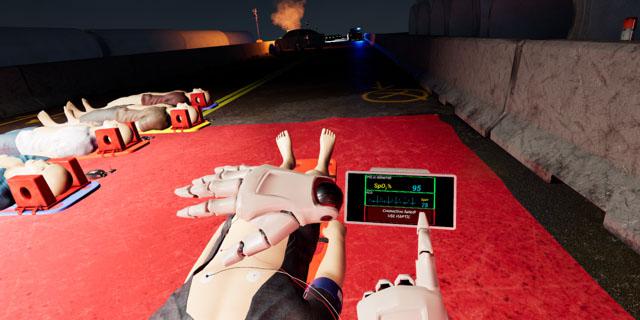First Responders Look for Advanced Haptic Interfaces
The requirement to share information and communicate effectively via radio or other equipment during natural disasters, fires, crimes or catastrophes has only increased for police officers, firefighters and other public safety personnel. The National Institute of Standards and Technology’s (NIST's) Communications Technology Laboratory, known as the CLT, has been working to improve interoperability among the first responders and other public safety organizations, conducting research to update legacy systems and harness new mobile technologies to exchange vital voice and data communications in a crisis
The Public Safety Communications Research Division (PSCR), part of the CLT that oversees communications-related research and development (R&D), programs and standards development for 60,000 agencies and 5 million first responders, is conducting a technology prize challenge to find haptic interface-based solutions. The Haptic Interfaces for Public Safety Challenge is open through April 22 and the PSCR will award up to $425,000 to contestants, said Dereck Orr, PSCR division chief, NIST. For the challenge, PSCR is partnering with the First Responder Network Authority; FirstNet, built with AT&T; MSA Safety; and the West Metro Fire Protection District in Colorado.
Haptic interfaces would provide a tactile response to firefighters and other safety officials, offering a tangible connection to digital information. Simple haptic interfaces, such as the vibrating alarm built into smartphones, are commonly used in commercial devices, and the first responders assert that it could be useful technology for their community. It could expand the information that firefighters can receive during a fire, for example, when a smoke-filled room has impaired their ability to see.
For the PSCR’s challenge, the haptic interface solutions would ideally be prototyped in a virtual reality application embedded in firefighter equipment, Orr explained. The challenge builds on the PSCR’s Virtual Reality Heads Up Display challenge, which it conducted last summer.
“Public safety officials perform tasks in a variety of environments that severely limit their senses and ability to communicate,” Orr said. “The purpose of this challenge is to assess the potential of using virtual reality environments as a development tool to prototype and iterate on designs for public safety technologies. The challenge also seeks to investigate the relevancy of haptic interfaces to assist in first responder tasks.”
More information on the PSCR’s Haptic Interfaces for Public Safety Challenge can be found online.






Comments